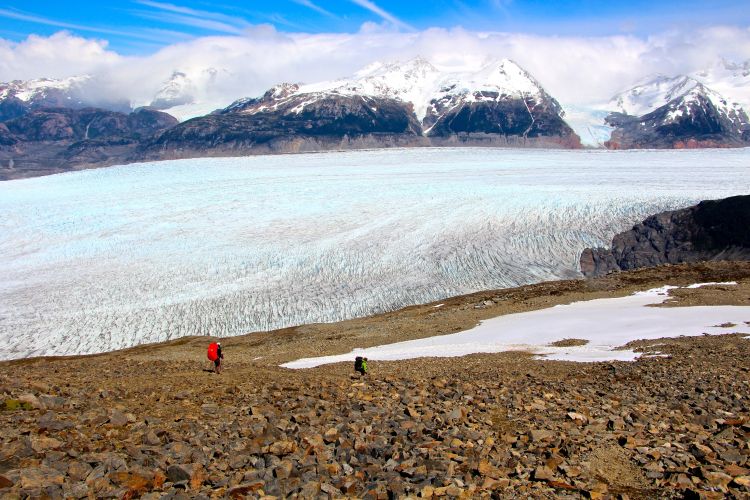
Torres del Paine National Park in Patagonia, Chile, is one of the world’s most beautiful places.
The landscape is stunning: jagged mountains, seemingly endless glaciers surrounded by crystal blue lakes, snowy mountain passes with Andean condors flying overhead, and green mossy forests straight out of a scene from The Lord of the Rings.
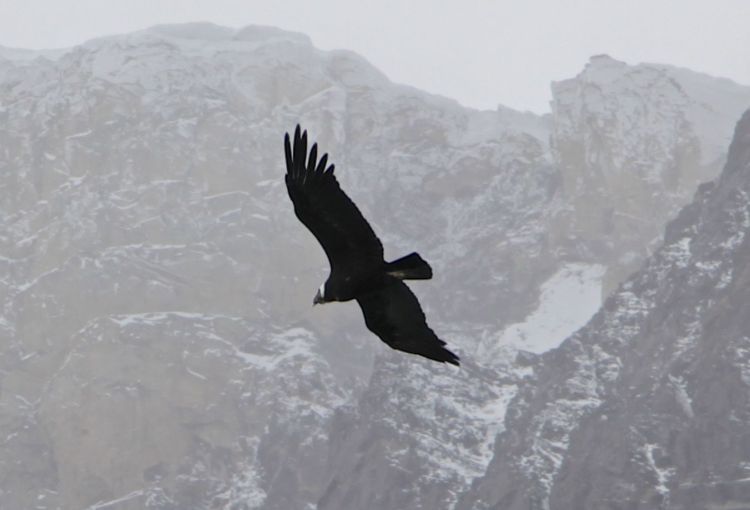
During our time in the park, my friends and I continually redefined our vision of paradise. Comments like, “Wow, this is my dream place” were quickly replaced with “Oh, wait, THIS is my dream place,” followed by, “No no, THIS is my dream place.”
Torres del Paine is so breathtaking that it pushed the boundaries of what we imagined to be possible, not only in nature but also in our own lives.
It inspired us to dream bigger, feel stronger, and become more at peace with the choices that we have made that led us to such a special place at this point in our lives.
The “O” Circuit, the longer, more difficult of the two popular treks in Torres del Paine, was both physically and mentally challenging.
Our packs never seemed to feel lighter, despite dropping food weight as we progressed. At the end of each day, my legs were exhausted, my blisters were juicier, and I often felt like I would not have been able to take one more step. However, I enjoyed the physical challenge because it helped clear my mind,, and was a welcome opportunity for personal growth reflection.
Focussing on my physical pain helped me to let go of silly stresses:
Did I do the right thing turning down a teaching job at a school I liked?
Should I be investing energy into a relationship that is in many ways unrealistic?
Am I being too selfish and entitled to make time and space for writing in my life, when it probably will never translate into a full-time career?
Am I being irresponsible by taking time off to travel when so many BIG LIFE questions are up in the air and I have deadlines for my PhD that I’m falling behind on… and I don’t even have a permanent job?
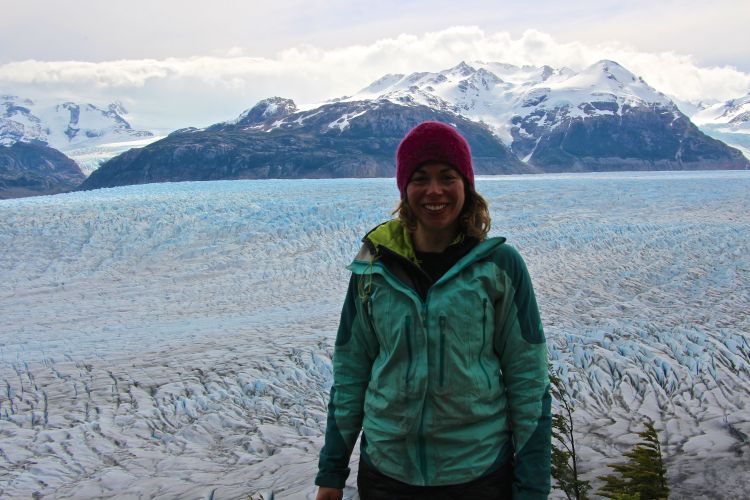
Being on the trail helped me focus on the present, and reminded me to just let life unfold as it’s meant to, without worrying too much about what the future will look like.
The choices I have made thus far brought me to Patagonia, so I must be doing something right, even though it sometimes feels like I’m far behind from where many of my friends, who have stable careers, marriages, and families, are.
Planning Tips for Hiking the “O”

Hiking Patagonia’s “O” Circuit requires an extensive amount of planning, research, and advance decision-making…which is hard to do when you’ve never traveled to a place before. (Most of this was done for me by my friends Jill and Katelyn–thanks ladies!)
Hopefully, the following will help future trekkers with the trip prep needed to have an amazing experience in the mountains.
Make Reservations BEFORE You Go & Book Early
One of the most important things that you will need to do before you even think about heading to Torres del Paine is to make reservations.
I can’t emphasize this enough. MAKE RESERVATIONS.
It is essential to have reservations at each campsite before you start your trek. Fortunately, the friends I traveled with are currently living and working in Colombia, so were in contact with colleagues who had already done the hike and knew that they had to make reservations well in advance.
Being more of a spontaneous traveler, I could easily have seen myself arriving in Chile without having made any reservations in the park at all.
Unfortunately, camp sites book up very quickly. We saw several hikers being turned back by park rangers at various points on the trail because they didn’t have reservations for upcoming campsites.
My friends made reservations in October for our trip in January and some campsites were already booked. This required them to modify our itinerary based on availability of campsites.
When making reservations, you also need to decide whether you are going to sleep in tents that you bring yourself, tents that are already set up on platforms at the sites, or in refugios.
It is not mandatory to hike with a guide in Torres del Paine, but it is a great option for travellers with less backcountry experience, for those interested in learning more about the landscape, and for additional safety.
My friends and I opted to carry our own gear, including our tent, camping equipment, food, clothing stove, etc in backpacks and organize the trip ourselves without a guide. This is definitely the cheapest option and since trails are so well-marked for the most part, it was fairly safe.
We camped in a 3-person tent which we had rented in Puerto Natales for 5 of the nights and stayed in hostel-style rooms with bunk-beds in ski-lodge-esque refugios for two nights.
Our packs were quite heavy (especially mine–I definitely need to invest in a lighter sleeping bag!) and it rained a lot, so it was a nice splurge to sleep in beds a couple of nights. This was quite a bit more expensive, though, so staying in refugios every night wasn’t really in our budget.
If we were to do the hike again, we would consider reserving tents at campsites to avoid having to carry our tent throughout the trek as this was not much more expensive and would help to reduce the weight in our packs.
Choosing “The O” vs. “The W”
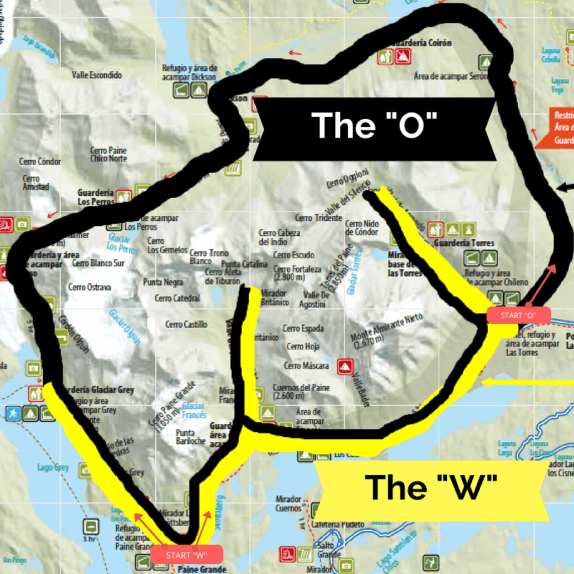
For more info, check out this Torres del Paine Map
Before you book your accommodation at campsites, you need to decide on your route.
There are two main treks in Torres del Paine National Park. The “W” is shorter (76km) and much more popular. The trail follows a “W” letter shape taking tourists to spectacular miradors (look-out points) to see views of the French Valley, Grey Glacier, and the infamous towers, Las Torres, after which the park is named. It takes between 4-6 days to hike the W depending on weather conditions and how long you want to spend at each site.
We opted to hike the Paine Massif or “Big Circuit,” the “O,” which is a longer and more challenging route of 110km that takes between 8-10 days to complete.
It is less busy and more remote, which was more appealing for my friends and I as we were craving a physical challenge and an opportunity to be fully immersed in the wilderness.
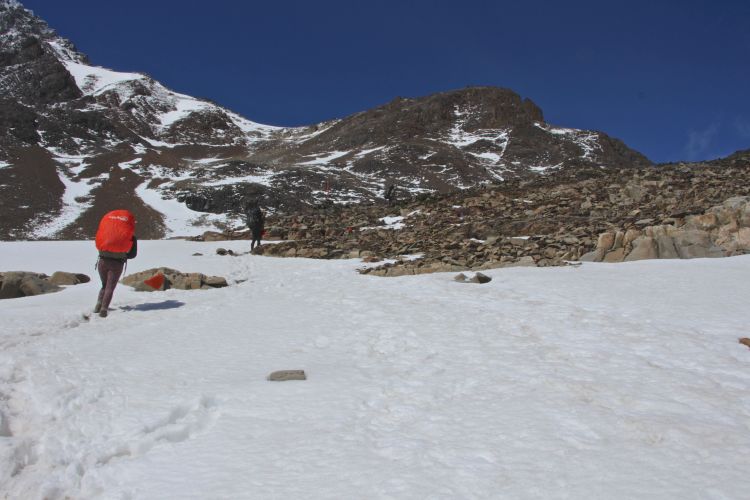
To complete the “O”, hikers follow a counter-clockwise loop around the backside of the mountains before hiking the entire “W” route.
We hiked the “O” in 8 days, since we were more limited with vacation time and planned to travel to Valparaíso and Santiago afterwards.
In hindsight, we would plan to do it in 9 or 10 days to allow for a recovery day (perhaps at Grey Campsite where we could opt to kayak or hike with a guide onto Grey Glacier). Also, the views at the miradors are very weather dependent, and more time could increase chances of being able to see the French Valley or the Torres on a sunny day.
Where We Camped on the “O”
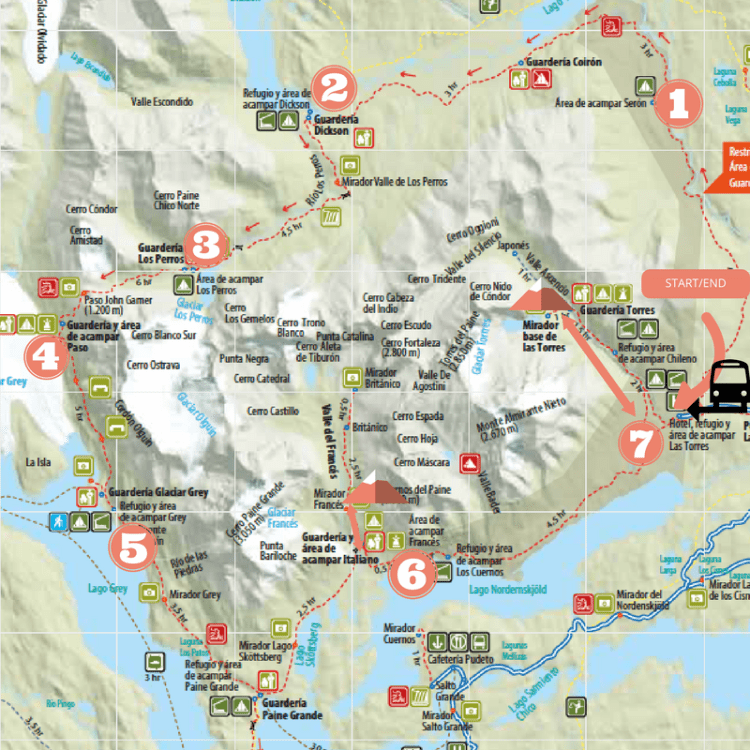
My friends made reservations for our trek (December 31-January 6) in October and several campsites that we wanted to stay at were ALREADY SOLD OUT. Therefore, we had to modify our itinerary slightly to adjust for the campsites that we were able to book.
This was our itinerary for hiking the “O” in Torres del Paine.

How to Book Your Campsite
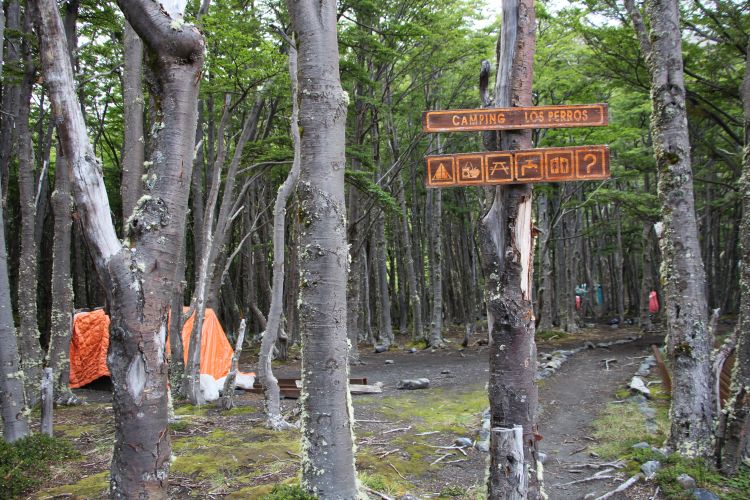
There isn’t a central reservation system for Torres del Paine, so if you are planning the trip yourself, you need to make reservations at campsites run by one of the three companies below.
As previously mentioned, my awesome friends made the reservations for this trip. They expressed having had some difficulty/frustration with the reservation process. Many people we met on the trail also said they had some problems communicating with some of the campsites and securing their reservations.
Everyone agreed on the importance of BOOKING EARLY.

Fantastico Sur:
Fantástico Sur is a family business that has refugion, cabin, and campsite accommodation located along the W Circuit in Torres del Paine National Park.
Each Refugio has a restaurant, which offers breakfast, lunch, dinner, beverages and boxed lunch options to carry while hiking. It’s also possible to rent camp equipment such as sleeping bags, insulation mats and tents.

Vertice
Vertice provides accommodation as well as guided tour packages along both the “O” and “W” trails. They offer shelters at Paine Grande, Grey, and Dickson, and campsites at Paine Grande, Grey, Dickson, and Los Perros.
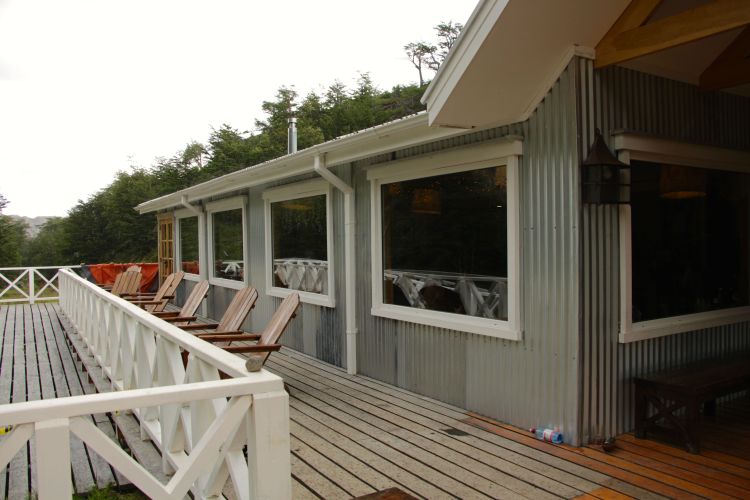
Conaf
The National Forestry Corporation (CONAF) is a private law entity under the Ministry of Agriculture whose main task is to administer Chile’s forestry policy and promote the development of the sector.
The online reservation system http://www.parquetorresdelpaine.cl/en/ is for the free campsites authorized by CONAF: Las Carretas, Italiano, Paso, and Torres.
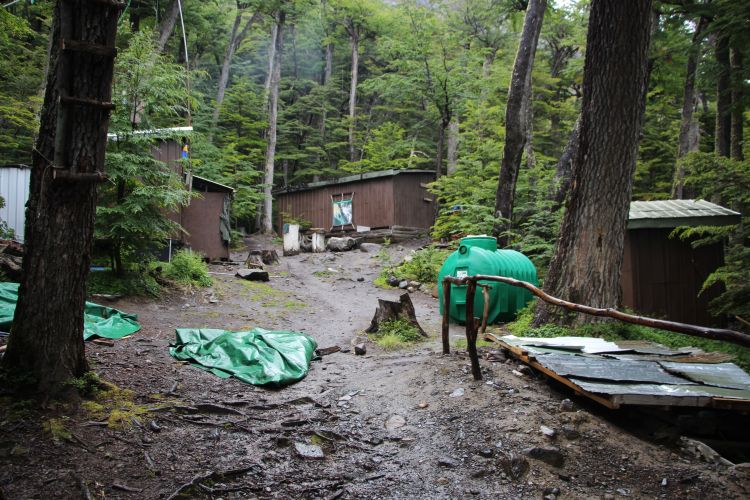
How to Get to Torres del Paine National Park
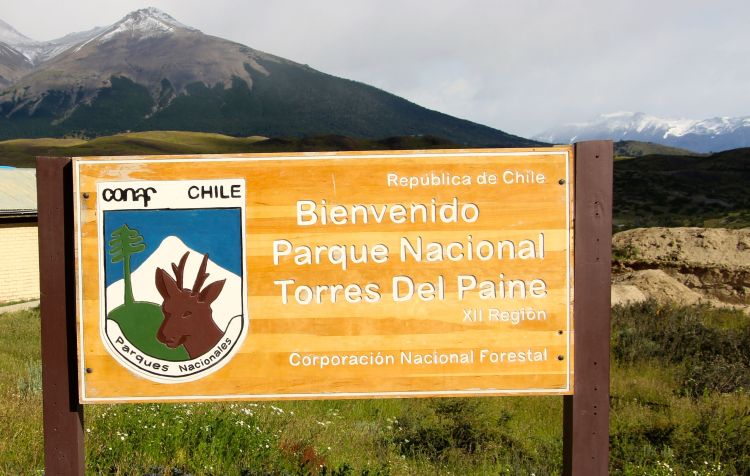
I traveled from Toronto to Puerto Natales all in one day because I was meeting friends who were already in Southern Argentina and we wanted to get started on the hike as soon as possible since we were limited by our vacation time.
While I did end up making it to Puerto Natales as planned, it was quite stressful as my original flight was delayed and I missed my connections. This being said, I would recommend spending a night, or even a couple of days in Santiago, instead of trying to do it all in one journey.
1. Flight from Santiago–> Punta Arenas


I flew Air Canada direct from Toronto to Santiago (10 hours) and booked a separate ticket through Sky Airlines to Punta Arenas. There is also an airport in Puerto Natales, which is closer to Patagonia (saves the 3.5 hr bus from Punta Arenas to Puerto Natales) but flights were much more expensive than our Sky Airline flight option to Punta Arenas.
Sky Airlines is a low-cost Chilean airlines that operates domestically in Chile as well as to a few international cities in South America.
Unfortunately, my flight from Toronto was delayed by more than 2 hours so I had already missed my Sky Airlines flight by the time I picked up my luggage.
Since I basically just didn’t show up for my flight, I anticipated having to buy a new ticket out of pocket, but luckily the Sky Airlines agent allowed me to get on the next flight without any hassle (which saved me at least $250 US, possibly more if I would have had to stay in a hotel).
On the return trip, my friends and I spent a night in Punta Arenas. It’s a gritty, seaside town and the entry point to Antarctica.
I’d recommend spending a whole day there and take a trip to Isla Magdalena where you can see penguins in the wild. I had hoped to do this but we didn’t plan enough in advance and weren’t able to make time for it (it requires at least a half-day).
2. Bus Punta Arenas–> Puerto Natales
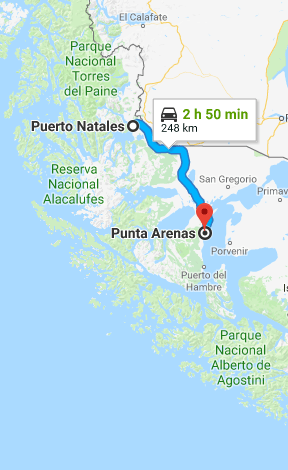 As mentioned above, there is also an airport in Puerto Natales, but prices were substantially more expensive and less frequent than flying to Punta Arenas and taking the bus to Puerto Natales.
As mentioned above, there is also an airport in Puerto Natales, but prices were substantially more expensive and less frequent than flying to Punta Arenas and taking the bus to Puerto Natales.
The bus from Punta Arenas to Puerto Natales is 8, 000 CLP and takes 3.5 hours.
I reserved my ticket in advance through Bus Sur. Busses leave about every 1.5-2 hours between 7am-9pm.
I had planned to take the 9pm bus, the last one of the night, which was tight given my flight change. Luckily the travel Gods were on my side, and everything worked out.
As my ticket said that the bus leaves from “Terminal Bus-Sur” in Punta Arenas, I took a 25 min taxi ride from the airport to the bus terminal (10 000 CLP) to catch the bus. It turned out that the bus stopped at the airport after leaving the terminal…so I could have saved myself time, money and stress by staying at the airport. Oh well. I was happy to have made the last bus of the night, meaning I would arrive to Puerto Natales late that evening as planned.
3. Taxi Puerto Natales Bus Terminal–> Yagan House Hostel
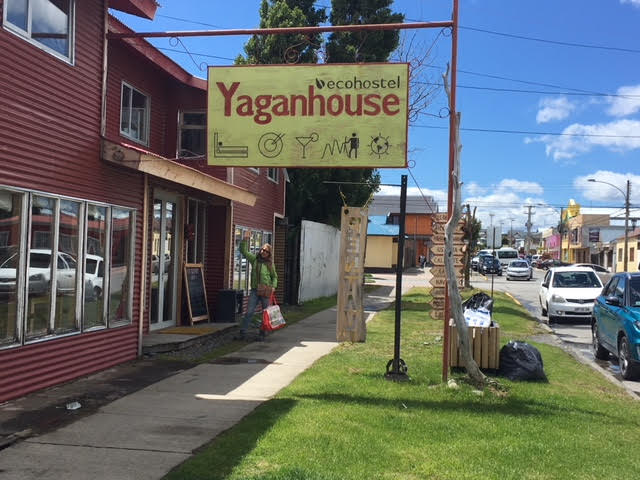
When I arrived at the Puerto Natales Bus Terminal at 12:15am, I took a taxi to Yagan House Hostel, which cost 1, 500 CLP and took less than 5 minutes.

Jill and Katelyn were relieved that I arrived safely in Punta Natales and on time. Jill had received a few panicky “Not gonna make it to Puerto Natales!!!” when I was dealing with missed flights and tight connections, so they had thought they might not be seeing me until sometime the next day. We shared a bottle of Chilean wine (the first of many during the trip!) and made a plan for a busy day of trip prep.
4. Bus Puerto Natales–> Torres del Paine
From October to April, several bus companies perform regular daily trips from the bus terminal in Puerto Natales to Torres del Paine.
The bus costs $ 7500 Chilean Pesos. It takes about 2 hours and 15 minutes to travel by bus from Puerto Natales to Laguna Amarga (where you have to pay $21 000 Chilean Pesos as a foreign tourist to enter the park).
From there you can take connections to the Pudeto catamaran at Lake Pehoe or transfer to Base Torres (which is where we started the O. Tickets cost $ 3000 Chilean Pesos).
Information about routes and fares is available directly from the companies offering transportation of passengers.
Buses JB : Departs from Puerto Natales at 7:30am and 2:30pm
Buses Gomez: Departs from Puerto Natales at 7:20am and 2:30pm
Buses Maria José: Departs from Puerto Natales at 7:30am and 2:30pm
Return to Puerto Natales
The regular buses from Torres del Paine National Park to Puerto Natales have 2 schedules, and it is possible to take them from three different places of the park, Administration Office, Pudeto and Laguna Amarga Gate.
Schedule 1:
1:00pm Administration Office
1:30pm Pudeto
2:30pm Laguna Amarga.
4:30pm Arrival to Puerto Natales
Schedule 2:
6:30 pm Administration Office
7:00pm Pudeto
7:45pm Laguna Amarga.
10:00 horas pm Arrival to Puerto Natales
Trip Prep Day in Puerto Natales

It took us an entire day to do last minute trip prep like renting equipment and buying food for the trail.
I would highly recommend planning to spent at least one full day in Puerto Natales to do this.
While we met a couple on the trail who had arrived in Puerto Natales in the morning, and only spent two hours getting last minute packing before getting on the 2:30pm bus to the park, they said that it was very rushed and stressful. (They had also brought freeze-dried with them from the UK so didn’t need to get much in terms of groceries).
Also, many stores are closed in the early afternoon (1:30-4:00pm) for siesta, so we ended up taking a lunch break to coincide with the few hours in the afternoon where we wouldn’t have been able to do any shopping anyways.
Make a Pit Stop to Frutos Secos!
 In the morning, we went to the grocery store to get snacks, coffee, and lunch items for the trail.
In the morning, we went to the grocery store to get snacks, coffee, and lunch items for the trail.
I had brought freeze-dried backpacker dinners that I purchased at Mountain Equipment CO-OP for our meals. However, I discovered that you could buy these same meals at most gear stores in Puerto Natales for about the same price that I paid for the meals in Canada.
Then we made a trip to Frutos Secos, which was definitely a highlight of the trip for one of my friends.
Frutos Secos is a tiny dried food shop in Puerto Natales where you can buy snacks like dried pineapple, apple slices, blue berries, craisins, raisins, etc, chocolate covered coffee beans, nuts, trail mix, spices, and freeze-dried meal packages. These treats certainly added some much needed flavour and variety to our daily breakfasts of oatmeal and provided us with sweet and salty snacks at the end of a long day on the trail.
Go to the “Three O’Clock Talk” at Erratic Rock Hostel

Erratic Rock hostel offers free Torres del Paine trekking seminars daily at 11am and 3pm.
We found the guide’s seminar to be helpful, informative, and entertaining and gave us a thorough and informative overview of crucial details that better prepared us for the trek. He talked about everything from getting to the park, equipment and food prep, hiking times, what to bring and what not to bring, weather, terrain information, permits, camping, and gave us a chance to ask questions.
The guide was obviously very experienced in Torres del Paine and had some fantastic advice for making sure we had a positive experience in the park. He was also hilarious and taught me some important tips like:
- Don’t wear a rain poncho unless you want to become a “flying tortilla”
- The mice in Torres del Paine speak English and have generations of experience in tourism (ie. don’t leave crumbs in tent).
- Don’t trust a stone when crossing rivers. Instead, get your feet wet!
- Avoid doing the “Gortex Dance” by keeping your rain jacket in your backpack while hiking. You will get too hot hiking in Gortex and will get wet anyways.
- You can drink the water from the lakes and streams in Torres del Paine and at all campsites.
- Bring your passport and make sure you have reservations. Rangers will be checking passports and reservation receipts.
- Mosquitos are bad at Seron and Dickson (They actually weren’t too bad).
- Leave early from Perros to Paso because Paso John Gardner closes at 11am. It takes 1 hour 40 min to get to the pass.
- When there are high winds, lean into the mountain!
- You can leave your pack (at your own risk) at the Ranger’s station at Italiano to climb to miradors in the French Valley without a heavy pack
- There are very difficult sections of the trail where you will ask yourself “Why am I doing this?” but it will be worth it in the end!
You can rent gear at Erratic Rock Hostel as well and don’t need to make reservations to do this.
Clothing Essentials
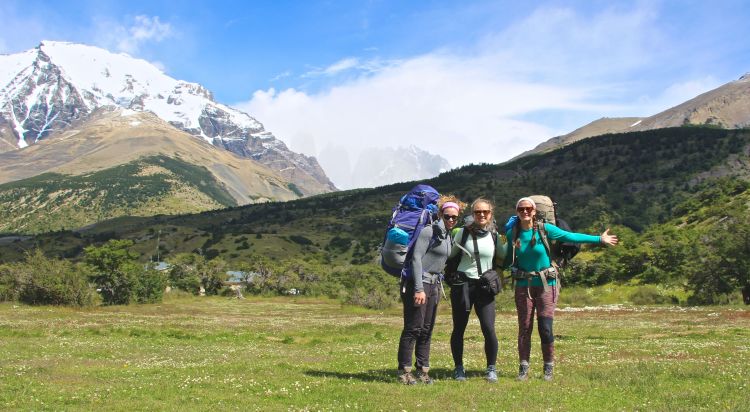
Once we rented all of our equipment and purchased all of our food (and some wine!) for the trail, we went back to Yagan House Hostel and packed our bags. In terms of clothing, it is important to stay light, and avoid packing things you don’t need.
Here’s what you do need: a ‘wet uniform’ and a ‘dry uniform.’
Wet Uniform:
- Rain gear (not poncho)
- Hiking pants (track pant, yoga pant, lightweight cargo/hiking pant)
- Base Layer hiking shirt (dry fit longsleeve or t-shirt that wicks away sweat)
- Thermal/fleece layer for hiking
- Wool socks (2 pairs)
- Hiking boots
- Optional: hiking gloves

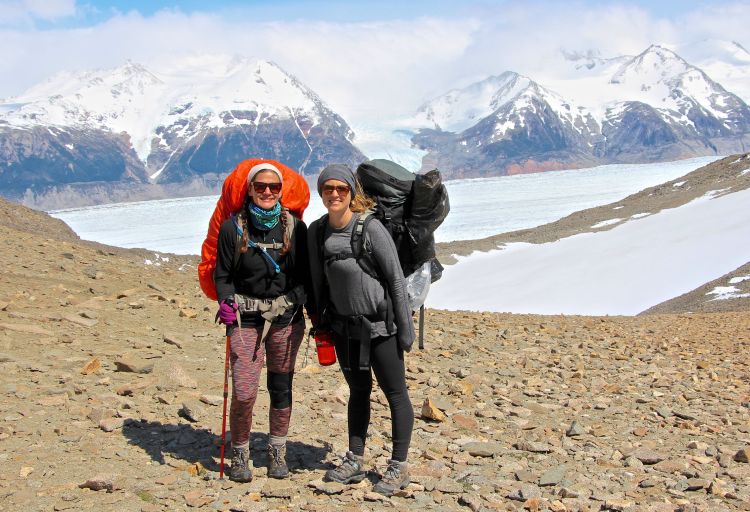

Dry Uniform
- Base Layer: Long underwear top & pants, preferably Merino wool
- Thermal layer: fleece/down jacket
- Outer layer: rain gear
- Wool socks (2 pairs)
- Dry shoes (running shoes, Crocs, outdoor slippers, etc)
- Warm hat/toque/headband
- Mitts

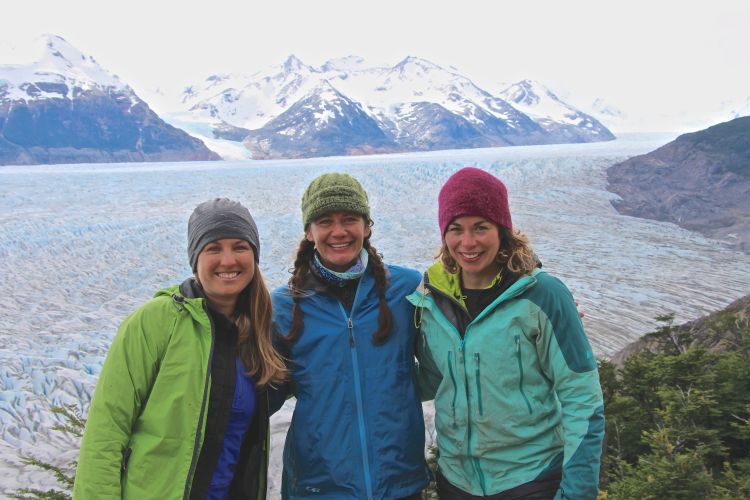

Other important items:
- Passport: You are required to show your passport at the Rangers Station at each campsite
- Sunglasses
- Flashlight/headlamp
- Waterbottle/Nalgene
- Sunscreen
- Bug repellent
- Camera
- Chargers: there are places to charge phones/cameras at many of the campsites
- Book/journal
- Underwear (some would argue that this is optional LOL)
- Toilet Paper
- Camping towel
- Biodegradable shampoo/soap (there are several places to shower along the trail)
- Hiking Poles (I didn’t bring these and my kneed regretted it on the steep descents)
- Ziploc bags/dry sack/garbage bags
- Lighter
- Cash/credit card (You can buy food/booze/supplies at refugios)
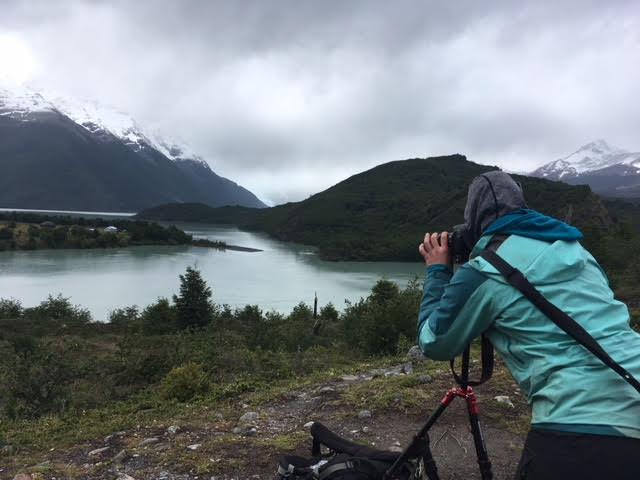
Camping Essentials
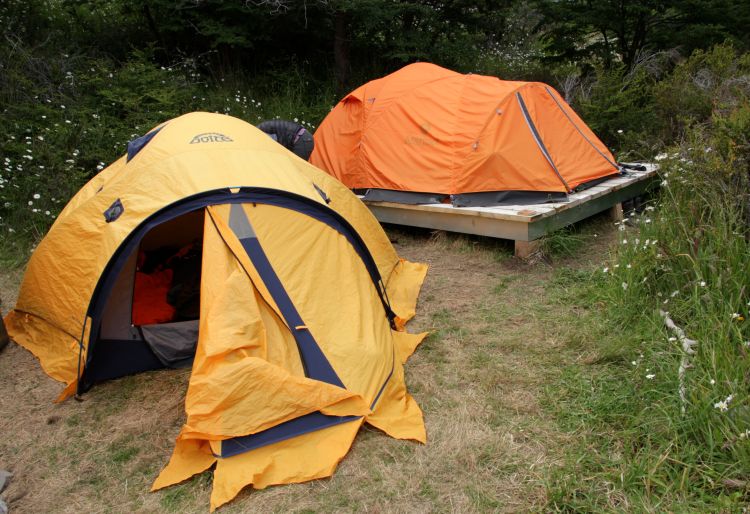
We traveled during the Christmas holidays, which is high season in Patagonia due to it being summer there, and didn’t make any rental reservations in advance. We had no problems renting all the gear we needed, although we had some difficulty tracking down a three-person tent (most places rent one or two-person tents).
I would suggest renting as much as you can while you are there in order to travel a little lighter.
I brought my MSR Whisperlite camping stove, empty MSR fuel bottles and pot, spoon, mug, and bowl for cooking with me from Canada. Since it was so cheap and easy to rent gear in Puerto Natales, I would leave the stove behind the next time around and rent one there. It was also somewhat tricky to find the white gas (Benezina Blanca) that my stove requires (we found it in a hardware store).
We each brought our own sleeping bags and sleeping pads, which I would do again since I prefer sleeping in “my own bed” than in a sleeping bag previously used by someone I don’t know.

These are the prices in Chilean pesos for equipment rental at Erratic Rock.
There were many other places to rent gear in Puerto Natales (such as Yagan House where we stayed) with equivalent prices.
I had packed my dry clothing in a dry sack and sleeping bag in a waterproof compression sack that I brought from Canada.
These items were key as it rains a lot in Patagonia and your gear is bound to get wet. That being said, put any dry items like journal, maps, books, camera, phone, into Ziploc bags and line your pack with a garbage bags. My friends and I also had waterproof rain covers for our packs which we found to be helpful in keeping our gear dry. It can get very windy in Torres del Paine so it is important to secure the rain covers to your pack so that they don’t blow away in high winds.
Gear I Didn’t Need

Before I went to Torres del Paine, I had this vision of it being very remote and wild, like a previous camping trip I had taken in Alaska.
While Torres del Paine is remote and feels wild in some sections (especially along the “O”), there is actually quite a lot of amenities and camping infrastructure that I hadn’t anticipated. There is even an option to pay to use Wifi at many of the refugios, especially along the W (although I was happy to take a break from cyberspace).
Here are some of the unnecessary items that I packed:
Lots of Extra/Emergency Food
If you aren’t on a budget, you don’t need to pack much food to hike in Torres del Paine. The refugios sell hot meals, as well as beer, wine and other alcoholic beverages (much more expensive than what you could bring yourself though). You can even buy packed lunches to take with you on the trail.
NOTE: On the “O” it isn’t always an option to buy food. Some of the campsites are a little more basic (like Los Perros and Paso).
Poop Shovel
I hadn’t realized that there would be bathrooms with flush toilets at each campsite (the simplest at Los Perros being a drain hole in the ground) and even hot water for showering at the refugios.
Water Filtration Supplies
You can also drink the water at each of the campsites and don’t need to filter the water from the streams. I put water filtration tablets in my water for the first couple of days on the trail, but stopped once I realized that the water was safe to drink and tasted great.
Bathing Suit
I had packed my bathing suit thinking that I might take a quick swim at some point to freshen up. However, the lakes contain icebergs and glacial water and I was often cold on the trail due to wind and rain. There are hot showers along the trail so if you want to get clean, you don’t need to freeze in order to do it.
Wilderness Wisdom

Peace & Inspiration
I feel very grateful that I was able to take the time to travel to Patagonia and hike the “O” in Torres del Paine National Park with my friends.
The trail inspired reflection, calm, and future travel plans, and helped us feel at peace with the choices we have made that have enabled us to embark on such an amazing adventure.
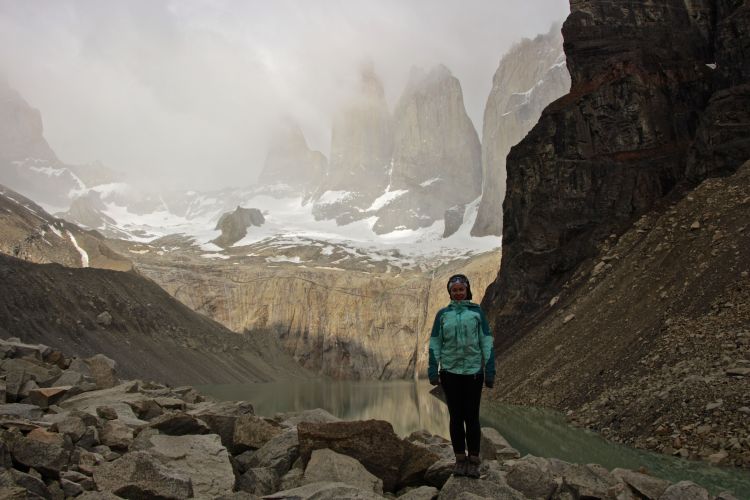
The Importance of Taking Time Off
I made what felt like an irresponsible decision to take unpaid weeks off work to travel to Chile (and later Ecuador).
I don’t have much money or a permanent job: shouldn’t I be working towards more stability and certainty in my life, rather than gallivanting around the globe?
Wasn’t it time to buckle down, grow up, and start taking life more seriously?
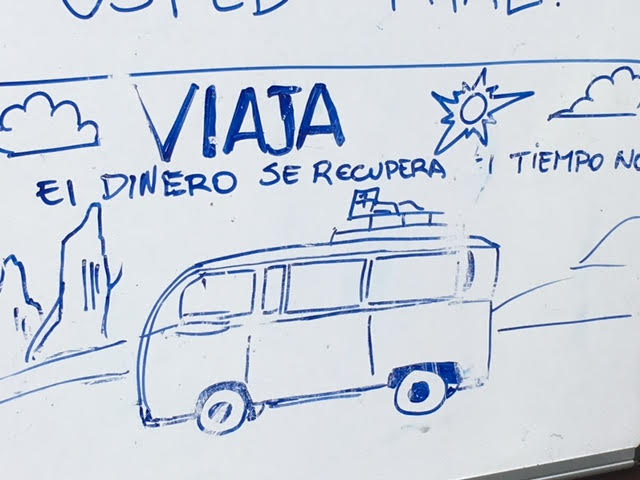
At one of the ranger’s check-in stations, there was a sign that translated to “Travel. Money can be recuperated, time cannot.”
This quotation helped me feel more at peace with my decisions to take time off, despite the social pressures in North America to work, work, work and never give ourselves a break.
While it is a privilege to live in a country and work at a job where I am paid fairly, which enables me to have some disposable income to travel, I returned home feeling proud & grateful that I gave myself some time off, rather than irresponsible.
My trip to Torres del Paine has made me stronger, and has helped me to gain a greater sense of clarity on my personal and professional goals.
When I went back to Toronto, I realized that nothing was lost professionally by taking time off. I jumped right back into work as I left it, and actually, my bank account is not suffering as much I had anticipated.
Live at Your Own Pace
 Sometimes on the trail my friends and I felt frustrated that we were hiking much slower than the recommended hiking times.
Sometimes on the trail my friends and I felt frustrated that we were hiking much slower than the recommended hiking times.
We thought that we were pretty fit and would be ABOVE the average hiking speeds. But we were also stopping a lot to take photos of the scenery (especially me!) and took breaks to have some deep conversations that were inspired by the sense of peace that the wilderness had instilled in us.
We decided that it didn’t matter what speed we were hiking at, as long as we got to our intended destination eventually.
In Patagonia in January the sun doesn’t set until close to 10pm, so there is really no rush to get to the campsites early. This helped me to realize that, like hiking, life doesn’t need to happen at anyone else’s speed but your own. I guess my pace is the right pace if it works for me…even if it means that I haven’t started making dinner when everyone else is washing their dishes.
Stay tuned for an upcoming post about my daily reflections and more wilderness wisdom that the “O” inspired for me.
If you have more specific questions about the hiking in Torres del Paine, don’t hesitate to contact me.
Beautifully written and I love your insights into time …time to travel…. taking your time…time with-out pay …. time for yourself….time in nature.
I’m inspired and can’t wait to get there myself. It looks magic! Thanks for sharing!
LikeLike
Thanks Debbie! You would definitely love it. It’s always so refreshing to spend time in nature…looking forward to another adventure with you sometime soon!
LikeLike
Fabulous! Loved reading your blog:)
Such an amazing adventure for the three of you !
LikeLike
Thanks Julie! It was definitely an amazing experience!!
LikeLike